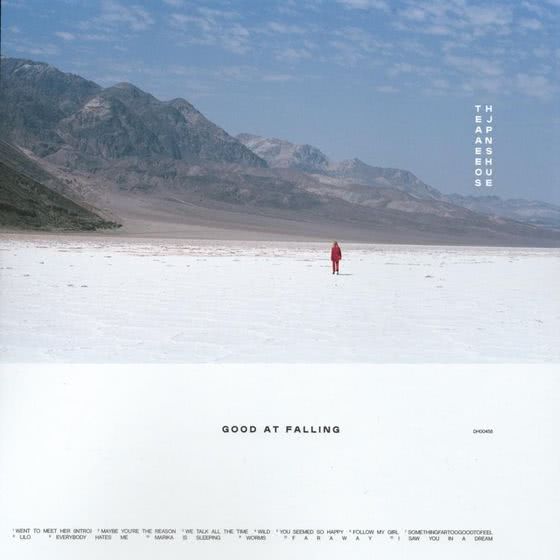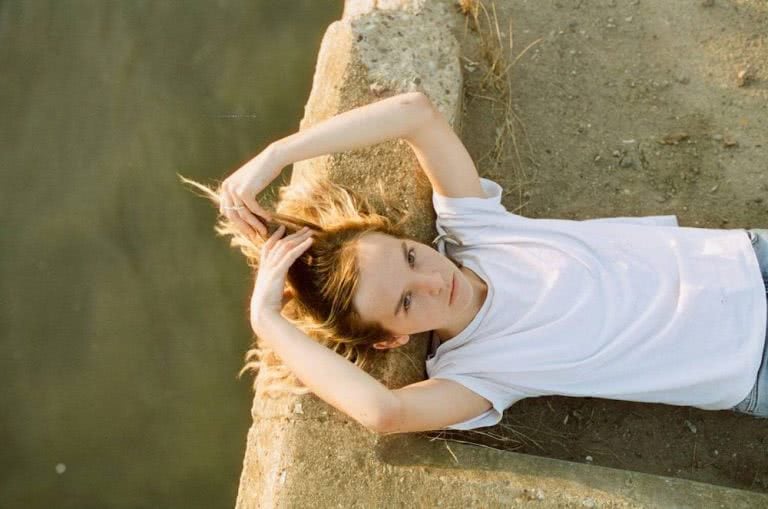Modern pop music is unabashedly intimate. Underneath rattling trap high-hats and haze-drenched production stylings are tales of love, loss, and growth that transport us to moments in time we’ve since passed off, illuminating new meaning.
On Good at Falling, The Japanese House showcases her penchant for her highly sophisticated songcraft and ability to cut deep to the crux of longing.
“I think that’s kind of a romantic, that duality of connecting with people. You write because you don’t want to feel alone, and we listen because it makes us feel like we’re not so alone. I’m writing these songs because I don’t really know what’s going on with my life and sometimes don’t understand anything, I feel lost quite a lot of the time.”
Amber Bain is the mastermind behind The Japanese House’s ultra-moody, blissfully youthful dream-pop. Initially catching the ears of The 1975’s Matty Healy in 2015, to which he described her sound as being “some weird post-apocalyptic Alison Moyet”, Good at Falling is her highly anticipated debut.
After crafting her unique sound and honest artistry through a string of EPs, the album is a mission statement that cements The Japanese House’s status as a modern pop luminary that beckons narrative hungry listeners to delve deeply into her personal life, uncovering new emotion within their own.
WATCH The Japanese House’s ‘Saw You In A Dream’:

According to Bain, the album chronicles five years of songwriting – a growth showcased in the wisdom the album exudes both musically and lyrically.
Love Music?
Get your daily dose of metal, rock, indie, pop, and everything else in between.
“One of the songs was written when I was 17 so that was 6 years ago, but they’re all treated and produced now so, that’s why that I hope they sound like cohesive. It’s hard for me to actually define the songwriting process, I kind of just do it differently every time.
Maybe I’m in my room, come up with like a soundscape or something or like come up with a guitar part, or sometimes I have lyric ideas. It’s all very random, I wish I knew how to write songs, I could probably, do it more.”
You write because you don’t want to feel alone, and we listen because it makes us feel like we’re not so alone.
Much like her alt-pop contemporaries, like Billie Eilish, Pale Waves and Sky Ferriera, Bain takes retro-soundscapes, wrapping them in hazy-eyed teenage fantasies that sing with the triumph of popping bass grooves and huge choruses, that also bask in the lows of atmospheric synths – it’s the ultimate soundtrack for the internet generation, thirsty for connection.
“I’ve got such a short attention span, I’m sort of all over the place all the time so I can’t actually finish anything unless I force myself. I listen to my music all the time because I have so much of it and I’m always listening like, “oh can I make something amazing out of this, can I do something with this. I kind of just have to yeah like catch the inspiration for a song when I hear it and then I’ll finish it.”
Bain has been open about her past relationships, with fans showcasing their appreciation for having an insight into who she is. Bain’s ex-girlfriend, the subject of the song ‘Marika Is Sleeping’ appears in the music video for the track ‘Lilo’.
WATCH The Japanese House’s ‘Lilo’:

“I’m not really holding back in any way and then as a result of that, like, I was like well, seeing as I’ve been so honest with this stuff I might as well continue that way of doing things. That’s why Marika’s in the music video because I was just like well, what would be the point of getting some other girl who I don’t know to be in it.
I might as well truly represent my relationship. I think as a result people connect to that, it’s not really an intentional thing. I guess it’s a reflection of who I am now as a person.”
Much like her mentors in The 1975, The Japanese House’ artistic output places a heavy focus on visuals. For those who came of age on Tumblr, aesthetic appeal is imperative for their favourite artists.
The Japanese House’s visuals encompass the overarching brooding, sentimental and bittersweet vibe the music presents. With millennial pink overtones and grainy, shadow-heavy film captured photos, Bain’s aesthetic puts the Coppola family’s directorial efforts to shame.
“It’s really important to me, if it wasn’t I wouldn’t be so obsessive with it. I think with like all of the EP’s like I did all the photos for it. Imagery is so important because it implicates the way that you hear things, it’s just another way of like projecting yourself and your image and that’s obviously something that I care about.”
The album cover, there’s a slight change in it because I’m on it. It makes sense because I am very much “in the album” maybe more so than the EPs, because I’m speaking about myself so openly.”

“An album cover is such a big part of how you perceive an album. Whether you like it or not, you’ll look down to your phone screen or vinyl sleeve or whatever you’re listening to it on, and there’ll be colours or scenery or and it’ll influence the way you hear the song.”
Listen to Good at Falling here.

































